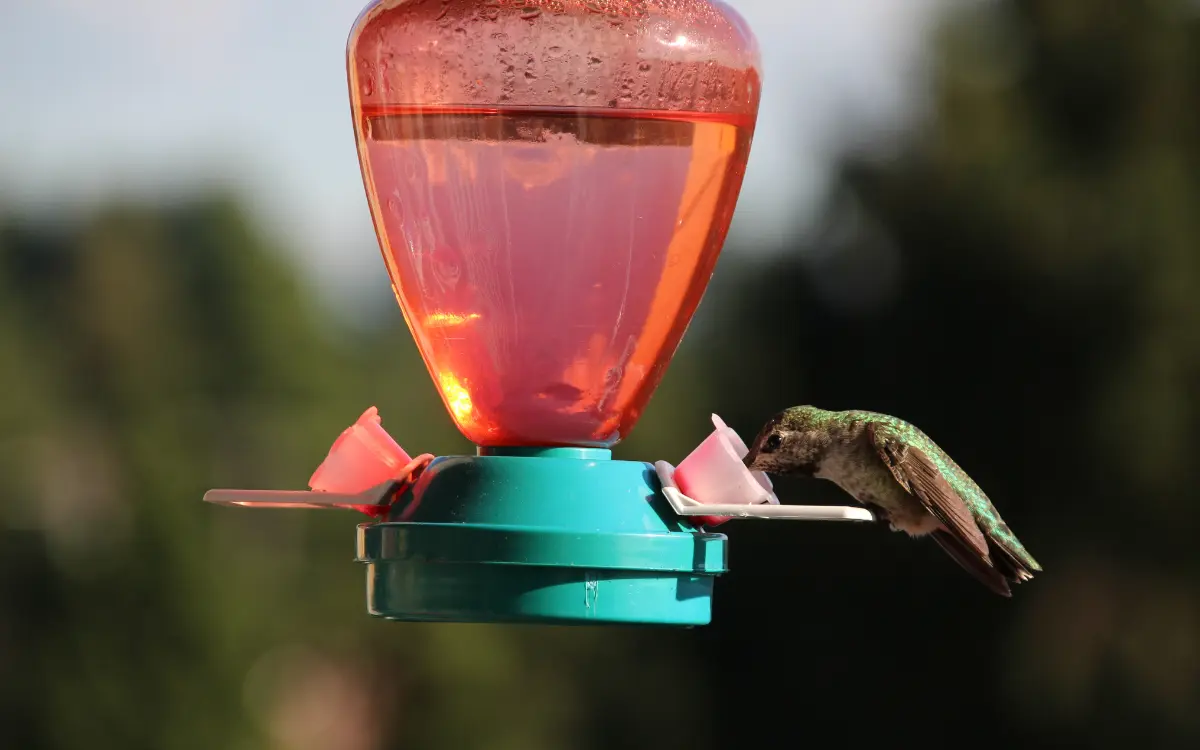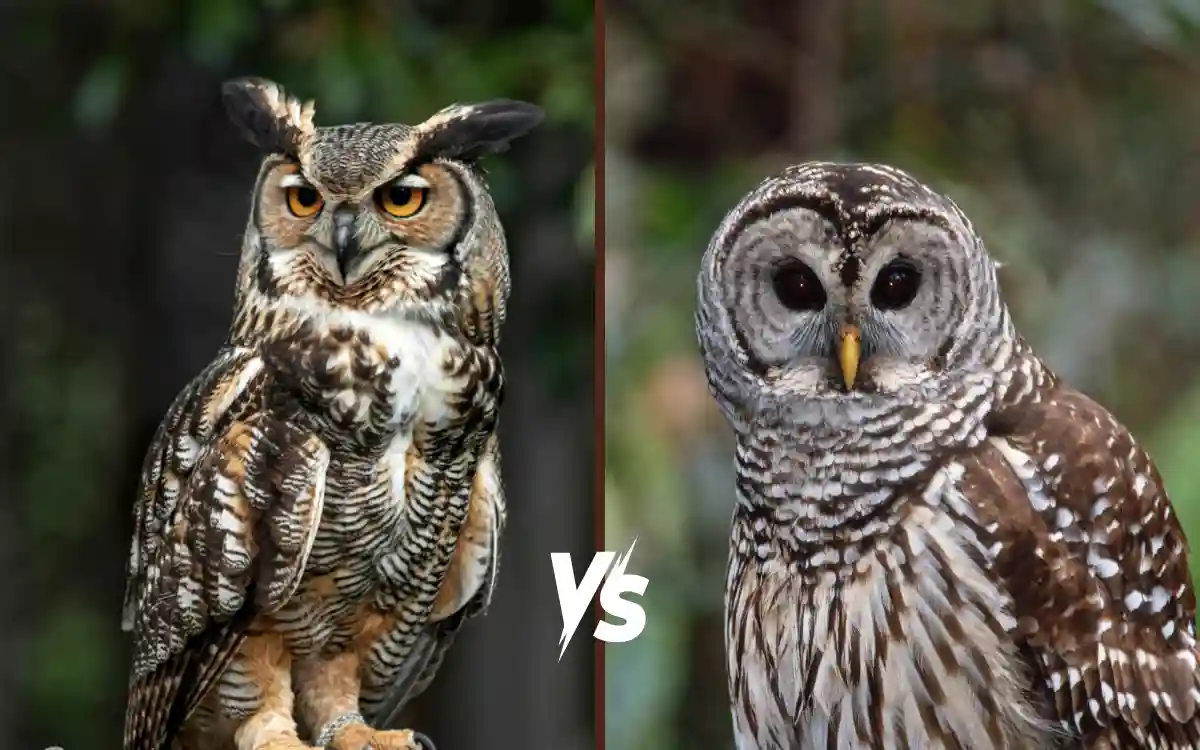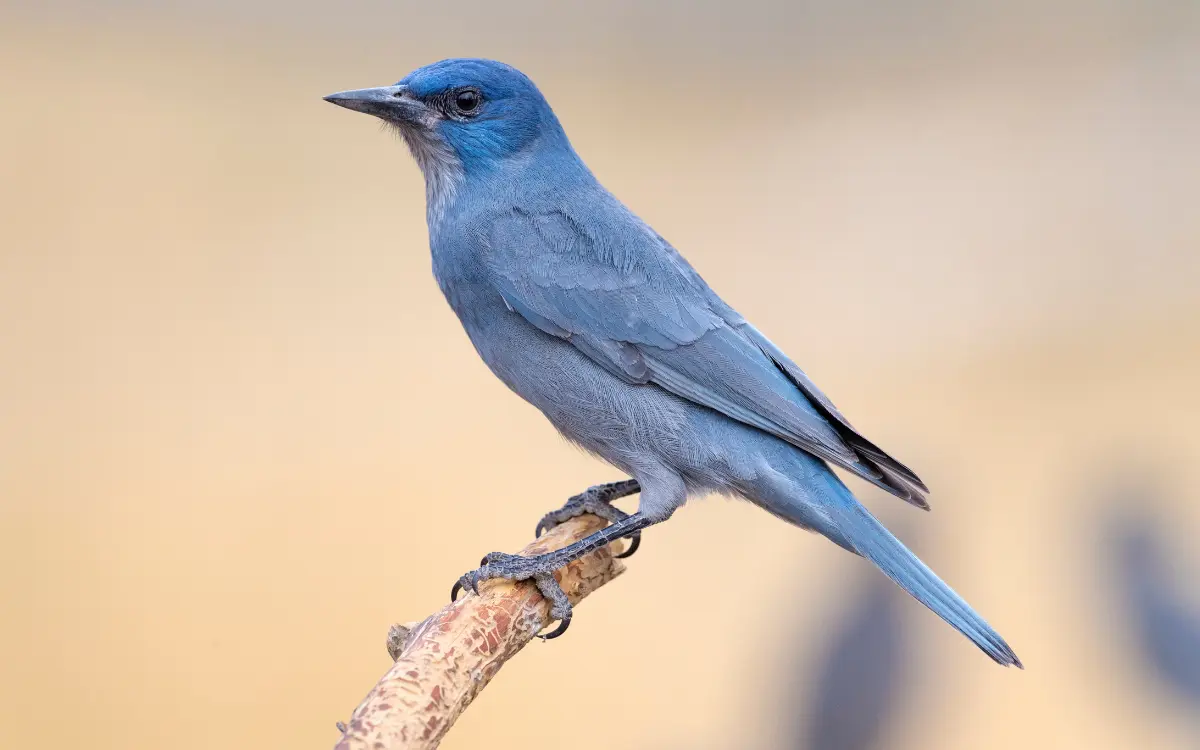6 Birds Similar to Chickadees (Photo & info)
If you love watching birds like chickadees, one of the little birds that look small tiny.
With the help of this article you can get more information about birds that look Similar to Chickadees. Let’s get into it.
Let’s take a look 6 birds comparison:
| Species | Description | Behavior | Habitat | Similarities and Differences with Nuthatches |
| American Tree Sparrow | Small, rusty cap, gray underparts, bi-colored beak | Social in winter, ground feeders | Open fields, woodland edges | Feeds on the ground, unlike nuthatches who forage on tree trunks |
| White-breasted Nuthatch | Large head, short tail, white face, blue-gray back | Climbs down tree trunks head-first | Deciduous and mixed forests | Typical nuthatch behavior, distinct in climbing habits |
| Blackpoll Warbler | Black and white, black cap, white cheeks | Long-distance migrator, forages in treetops | Boreal forests, migratory stops | High-canopy foraging, unlike nuthatch trunk foraging |
| Brown Creeper | Brown mottled upperparts, curved bill | Creeps up tree trunks in a spiral | Mature forests with large trees | Similar tree-trunk foraging but moves upwards, contrasting nuthatch’s downward movement |
| Tufted Titmouse | Gray body, white front, crest on head | Visits feeders, vocal | Deciduous and mixed forests | Uses tree cavities like nuthatches, but more varied diet and more social |
| Juniper Titmouse | Gray, small crest, sharp bill | Forages alone or in pairs, less social | Juniper and pinyon pine woodlands | Similar nesting habits, but does not climb like nuthatches |
List of 6 Birds Similar to Chickadees with full information:
1. American Tree Sparrow:
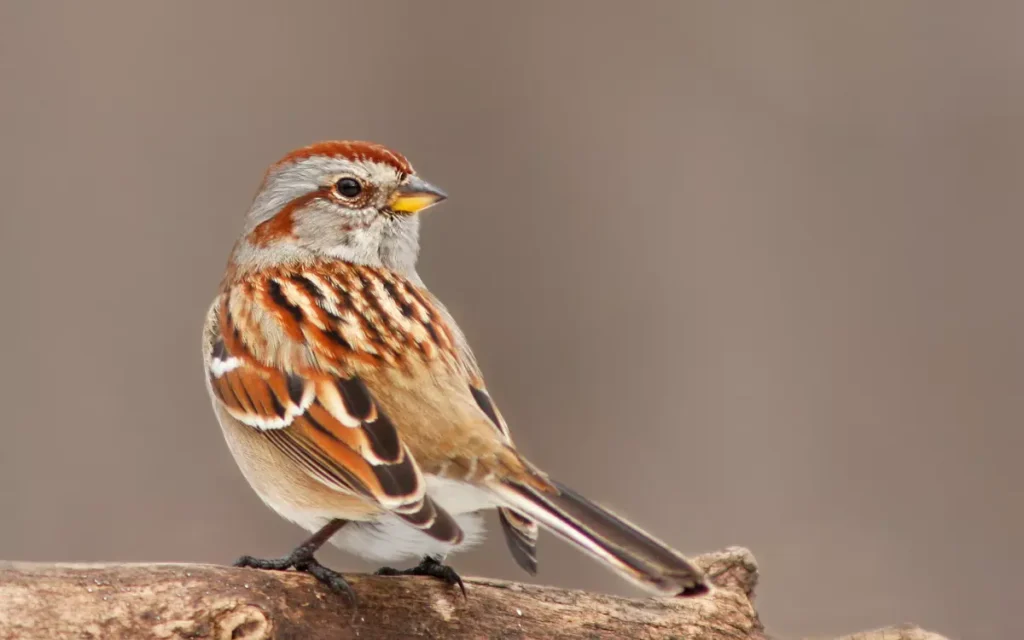
- Kingdom: Animalia
- Phylum: Chordata
- Class: Aves
- Order: Passeriformes
- Family: Passerellidae
- Genus: Spizelloides
- Species: S. arborea
The American Tree Sparrow is a small bird easily identified by its rusty cap and eye-line with a gray underbody and a two-toned beak. These sparrows primarily inhabit open fields and edges of woodlands, particularly during the colder months as they migrate south from the Arctic tundra where they breed.
In behavior and diet, these sparrows are similar to chickadees; both species are social and primarily feed on seeds and insects. However, tree sparrows are more commonly seen foraging on the ground, while chickadees might also feed in trees and shrubs.
- Length: approximately 5.5 inches (14 cm)
- Weight: 0.5 -1.0 oz (13 – 28 gm)
- Wingspan: about 9.4 inches (24 cm)
2. White-breasted Nuthatch

- Kingdom: Animalia
- Phylum: Chordata
- Class: Aves
- Order: Passeriformes
- Family: Sittidae
- Genus: Sitta
- Species: S. carolinensis
The White-breasted Nuthatch is known for its striking appearance with a large head, white underparts, and blue-gray upperparts. It can be spotted walking head-first down tree trunks, a unique behavior among birds, which it uses to forage for insects and seeds hidden in the bark.
These nuthatches prefer deciduous forests and wooded areas where they reside year-round, rarely migrating. Unlike chickadees that flit among branches, the nuthatch’s movement along tree trunks is distinct and purposeful, reflecting its different feeding strategy.
Both birds share a diet of insects and seeds, but the nuthatch’s method of foraging sets it apart.
- Length: 5.1–5.5 in (13–14 cm )
- Weight: 0.63–1.06 oz (18–30 gm)
- Wingspan: 7.9–10.6 in (20–27 cm)
3. Blackpoll Warbler:
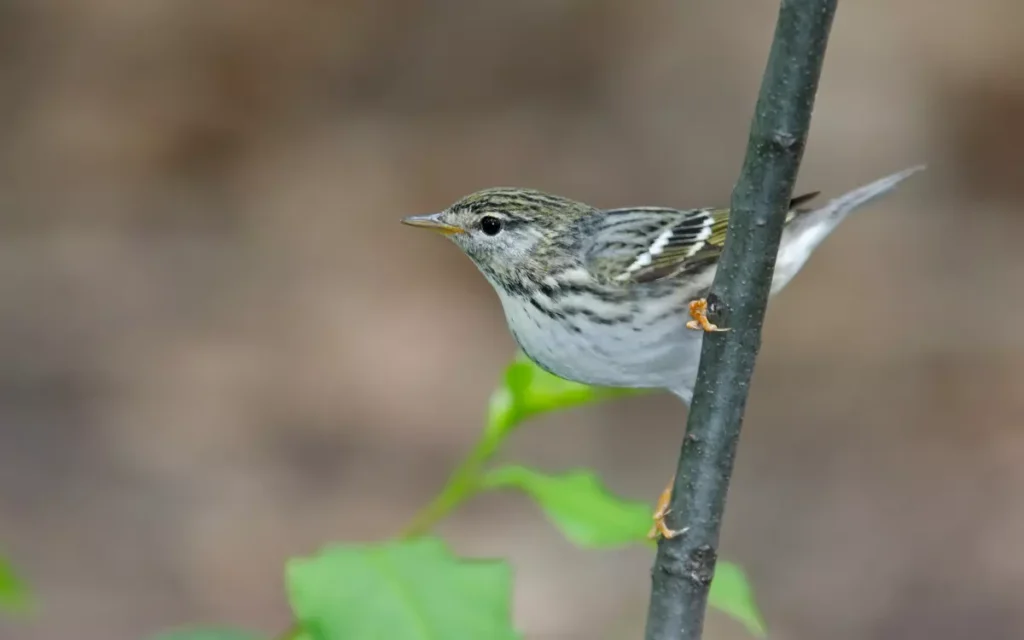
- Kingdom: Animalia
- Phylum: Chordata
- Class: Aves
- Order: Passeriformes
- Family: Parulidae
- Genus: Setophaga
- Species: Setophaga striata
The Blackpoll Warbler is a remarkable bird, easily identified by its black and white plumage and distinctive black cap. This small songbird is famous for its incredible long-distance migration, traveling from North America to South America each year. It prefers boreal forests for breeding and can be found in various forests during migration.
Unlike chickadees, which are more versatile in their habitats, the Blackpoll Warbler is highly specialized in where it lives and how it feeds, mainly on insects high up in the trees. This warbler’s endurance in migration and feeding habits highlights its unique adaptation to long journeys.
- Length: 4.9 – 5.9 in (12.5 -15 cm)
- Weight: 0.4 – 0.5 oz (12 – 13 gm)
- Wingspan: 7.9 – 9.8 in(20 – 25 cm )
4. Brown Creeper:
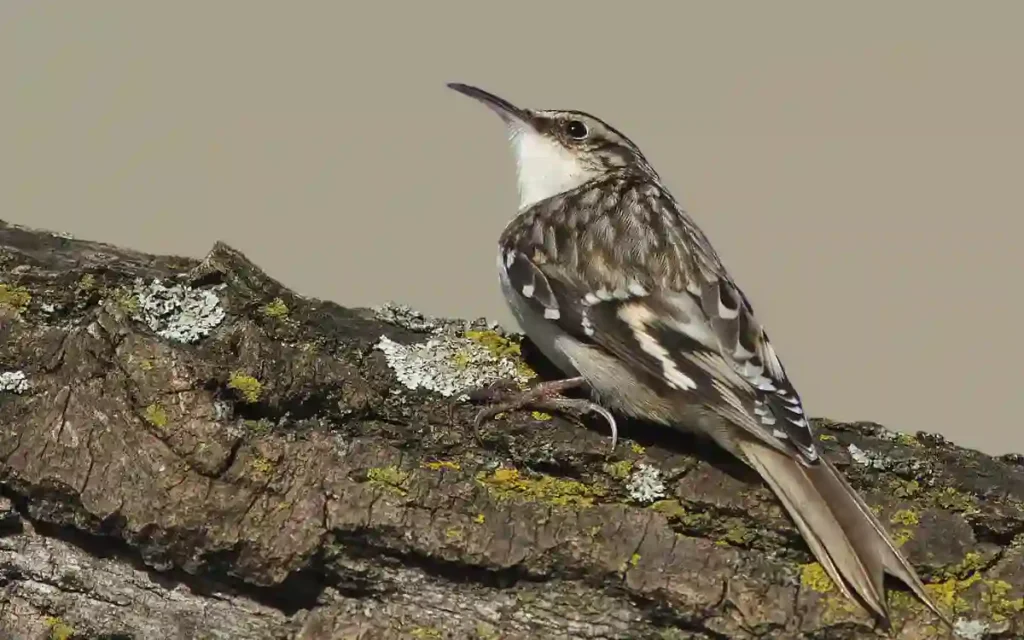
- Kingdom: Animalia
- Phylum: Chordata
- Class: Aves
- Order: Passeriformes
- Family: Certhiidae
- Genus: Certhia
- Species: Certhia americana
The Brown Creeper is a small bird, masterful at camouflage with its brown mottled plumage that blends seamlessly into tree bark. This bird is unique for its spiral upward movement as it climbs trees to forage for insects hidden in the bark.
Brown Creepers prefer mature forests with plenty of large trees, which are essential for their climbing lifestyle. While chickadees may flit among branches and feed in varied locations, the creeper’s method of foraging is specialized and consistent, making it a fascinating bird to observe in its natural habitat.
- Length: 4.7 – 5.5 in (12 – 14 cm)
- Weight: 0.2 – 0.3 oz (5 – 10 gm)
- Wingspan: 6.7 – 7.9 in (17 – 20 cm)
Read also: Chickadee vs Nuthatch:Side-by-Side Comparison
5. Tufted Titmouse:
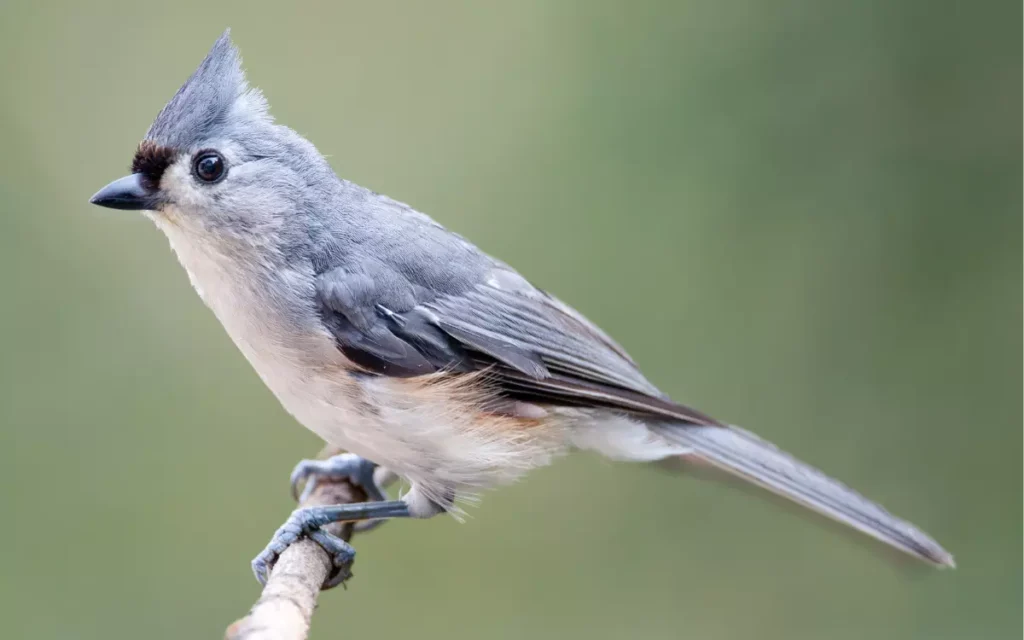
- Kingdom: Animalia
- Phylum: Chordata
- Class: Aves
- Order: Passeriformes
- Family: Paridae
- Genus: Baeolophus
- Species: Baeolophus bicolor
The Tufted Titmouse is a small bird with a large personality, easily recognized by its gray upper body, white underparts, and a distinctive tuft of feathers on its head. These birds are lively and vocal, often heard before they are seen, thanks to their clear, whistling calls.
They primarily inhabit deciduous and mixed forests, where they are active foragers, exploring branches for insects and seeds. While they share a similar diet with chickadees, the tufted titmouse’s prominent crest and more robust body set it apart, making it a favorite among birdwatchers.
- Length: 5.5 – 6.3 in (14 – 16 cm)
- Weight: 0.6 – 0.9 oz (18 – 26 gm)
- Wingspan: 7.9 – 10.2 in (20 – 26 cm)
6. Juniper Titmouse:
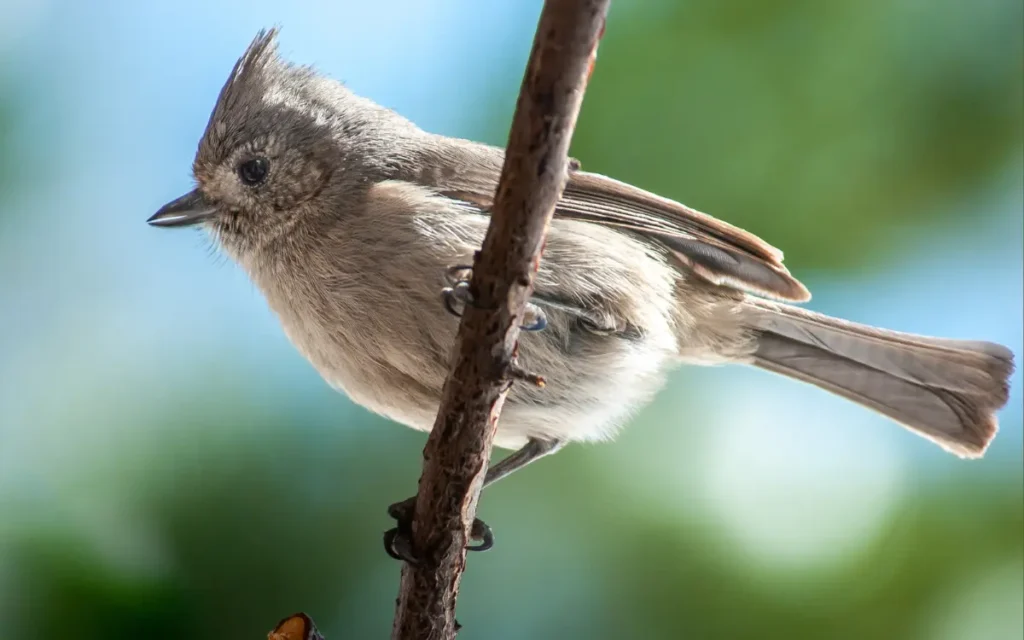
- Kingdom: Animalia
- Phylum: Chordata
- Class: Aves
- Order: Passeriformes
- Family: Paridae
- Genus: Baeolophus
- Species: Baeolophus ridgwayi
The Juniper Titmouse is a small, unassuming bird with a plain gray body and a sharp bill. It stands out with its small crest on its head, which adds to its character. This bird is typically found in arid woodlands, particularly around juniper and pinyon pines, which provide essential cover and food sources.
Unlike the more gregarious chickadees, the Juniper Titmouse tends to be less social, often seen foraging alone or in small groups. It’s quiet and reserved nature contrasts with the more active and vocal chickadees, making it a unique bird within its habitat.
- Length: 5.5 – 6.3 in(14 – 16 cm)
- Weight: 0.6 – 0.8 oz (17 – 23 gm)
- Wingspan: 7.9 – 10.2 in (20 – 26 cm)
The Role of Chickadee-like Birds in Ecosystems:
Birds that are similar to chickadees, like the Tufted Titmouse and Juniper Titmouse, play vital roles in their ecosystems. They help control insect populations by eating a wide variety of bugs. These birds also spread seeds, which helps plant growth and forest regeneration.
These birds share similarities with chickadees, like their small size and diet, but also have unique traits that set them apart. For instance, chickadees are known for their adaptability to different environments, whereas species like the Juniper Titmouse prefer specific habitats like arid woodlands.
For those interested in a Bird similar to brown thrasher, it’s important to note the easily recognized environments and roles each bird plays, improving our understanding of biodiversity.
Here are some FAQs :
1. What bird looks like a chickadee?
Ans: The Blackpoll Warbler and Tufted Titmouse look similar to chickadees, sharing similar sizes and some features.
2. What is similar to the Carolina chickadee?
Ans: The Black-capped Chickadee is similar to the Carolina Chickadee, with slight differences in song and coloration.
3. Is a chickadee a nuthatch?
Ans: No, a chickadee is not a nuthatch. While both belong to the order Passeriformes, they are different families and have distinct behaviors.
4. What is the rarest chickadee?
Ans: The Gray-headed Chickadee is considered one of the rarest, primarily found in remote parts of Alaska and Canada.
5. What is the official name of the chickadee?
Ans: The official name for the chickadee refers to its genus, Poecile, with several species like the Black-capped Chickadee (Poecile atricapillus).
Conclusion:
Birds similar to chickadees, like the Tufted Titmouse and Brown Creeper, play important roles in their ecosystems. Learning their unique traits helps birdwatchers appreciate and identify these wonderful creatures more easily.

